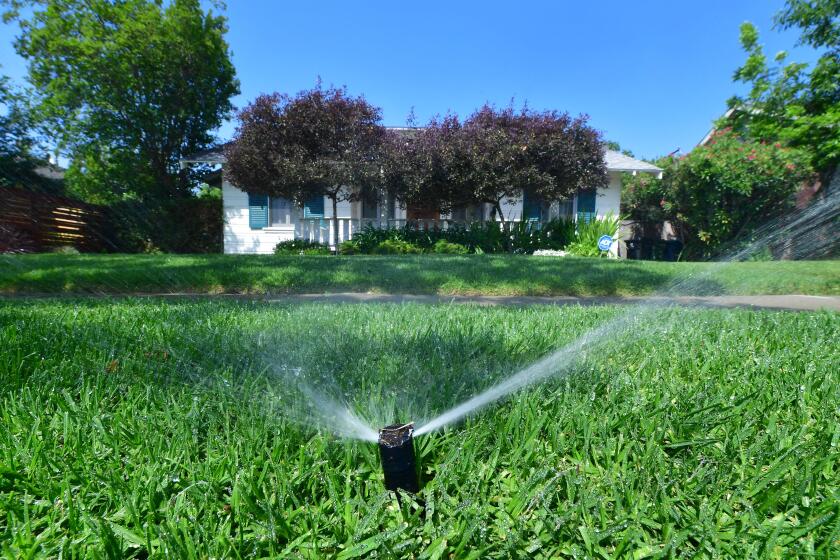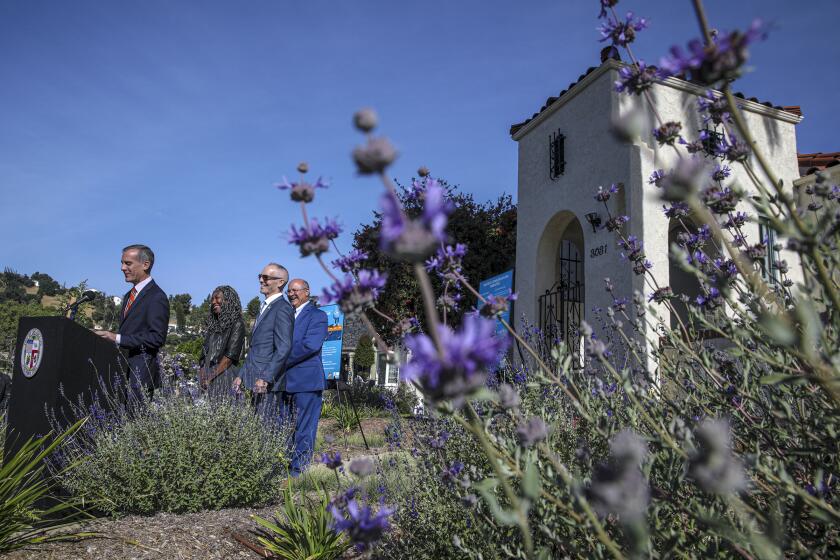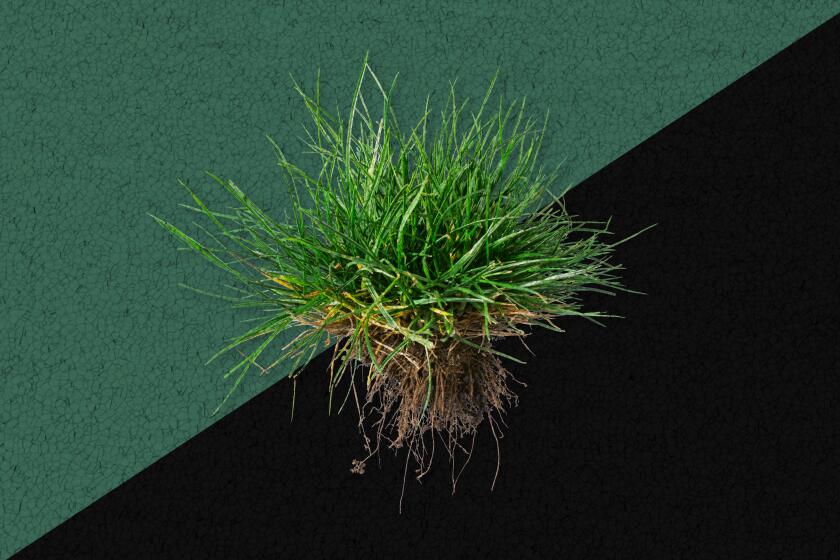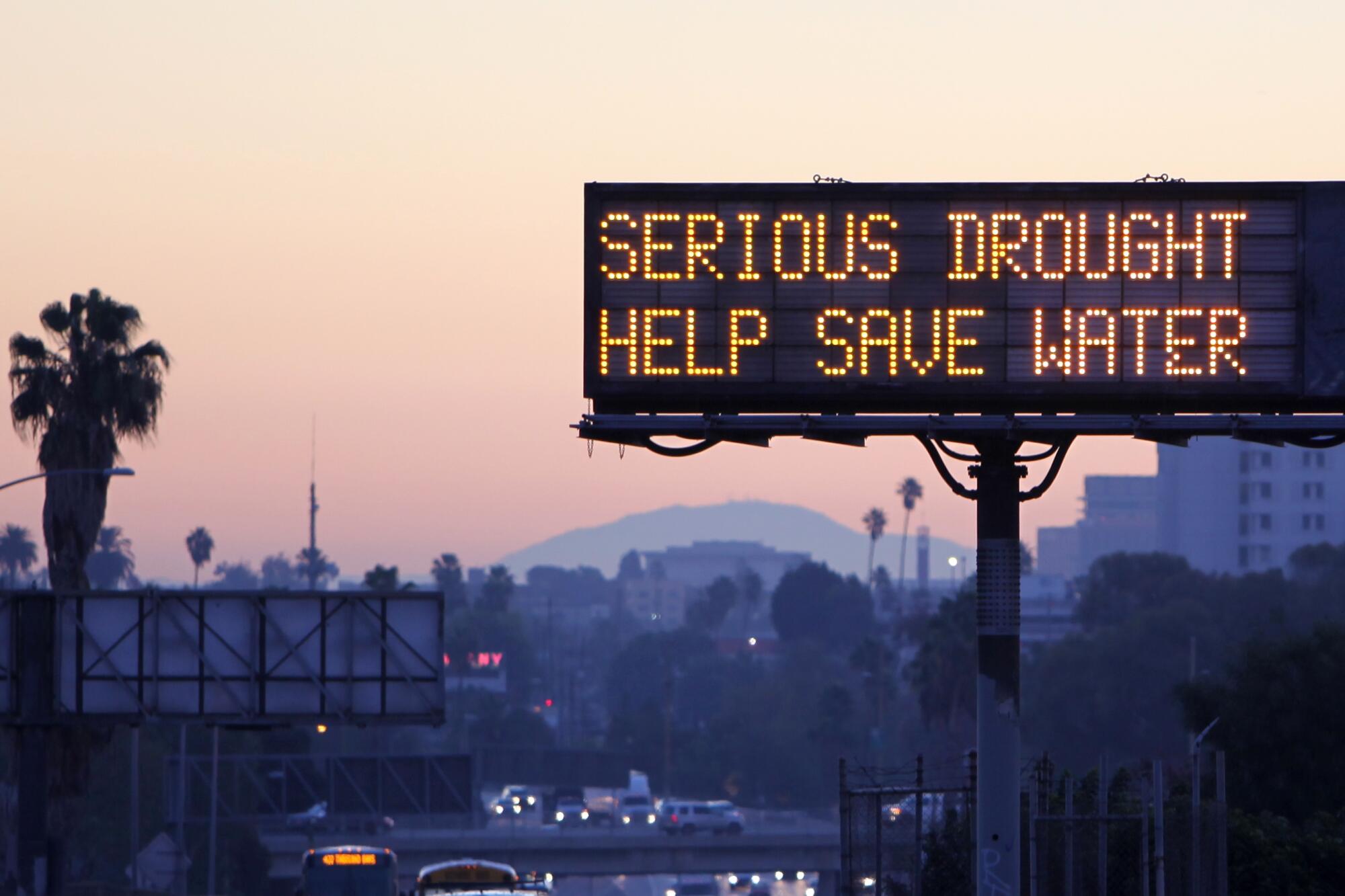
- Share via
It has not been a good year for California’s water supply. Last summer, amid conditions of ever worsening drought, Gov. Gavin Newsom issued a call for residents and businesses to voluntarily cut water use by 15%.
California’s response? In March, water use rose nearly 19% over the same time last year, according to the State Water Resources Control Board.
It appears that Californians have been actively ignoring Newsom. Or is it that they really haven’t been absorbing the message?
After all, the messages we get about water conservation are confusing. This is partially because water use and conservation are governed by local water authorities such as the Los Angeles Department of Water and Power, which means that programs vary from one service area to the next. That conservation effort you read about in the news? It might govern your area — or not.
Here’s what you need to know about the DWP plan to limit watering, which applies to all 4 million residents in their city of Los Angeles service area.
Also hampering conservation is that the messaging can be wildly abstract. How exactly am I supposed to figure out how to cut my water consumption by 15%? And how do I measure what I’m using to begin with? Our water bills come with usage charts — but if your bill lands digitally, to see those charts, you generally have to poke around the website. (At least that’s the case with Cal Water, the water district I reside in.)
In April, the Metropolitan Water District of Southern California set a goal of reducing water consumption by 35% — to an average of 80 gallons per person per day. This raises the question of what exactly 80 gallons means in terms of usage. Is it the equivalent of a run-of-the-mill bathtub? Or a bigger, fancy-pants soaker? And how do showers fit into this?
For the record: The average alcove tub from Lowe’s holds 50 gallons, while a luxury soaking tub — like the minimalist, angular unit central to Bong Joon-ho’s “Parasite” — might hold 72. A five-minute shower, in the meantime, will run you about 9 gallons. (If you like to luxuriate in a bath, drought zones may not be for you.)
This question — of how to get individuals to understand the amount of water they consume and how they might conserve it — is one that has plagued water managers for years, as my colleagues Hayley Smith and Ian James noted in an April report. They point to a 2014 study on perceptions of water use, which found that people, on average, underestimate how much water they use by a factor of 2.
In other words, take what you think you’re using — now double it.
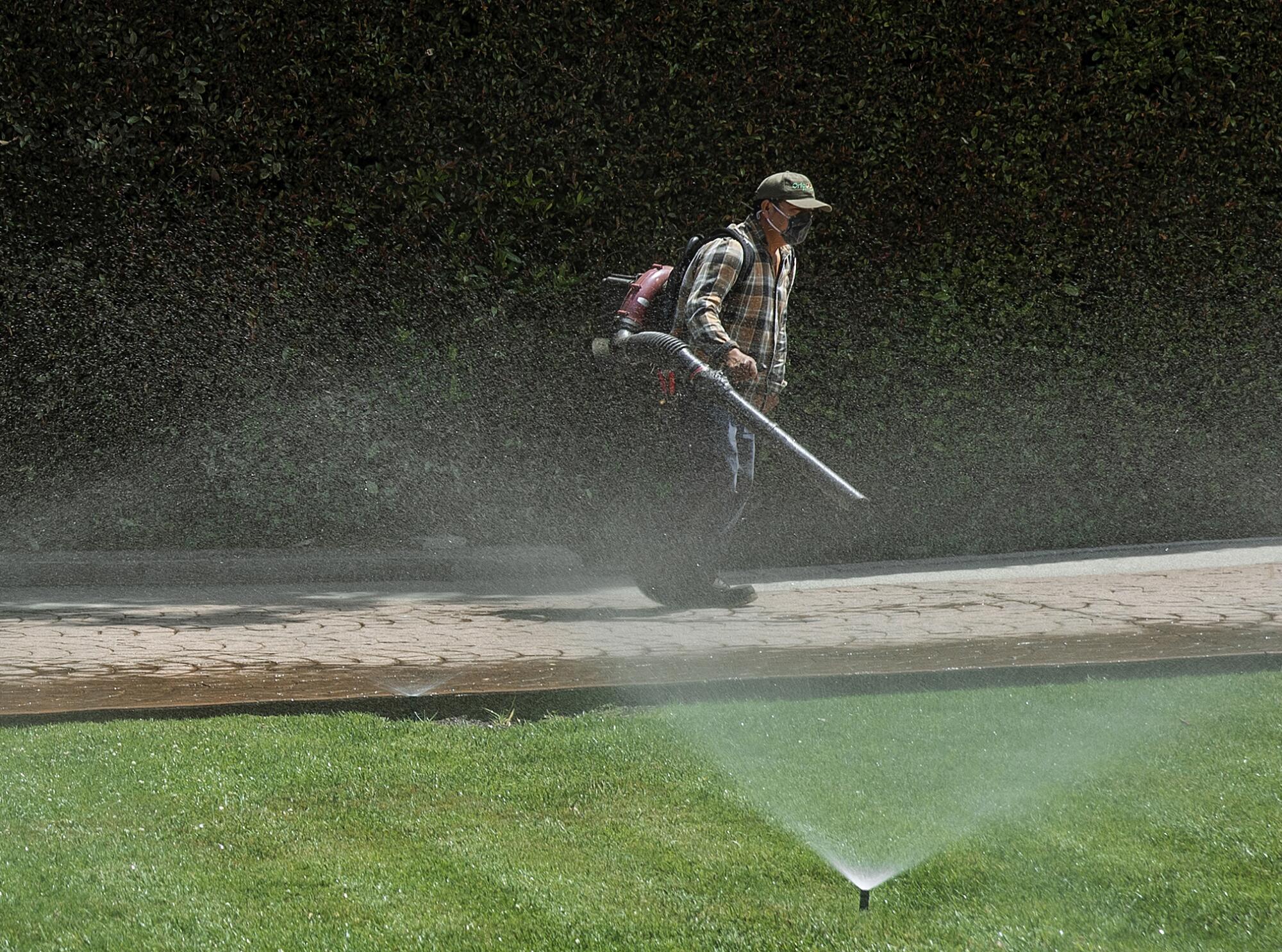
As California drought worsens, the DWP in Los Angeles will limit outdoor watering to two days a week, with watering capped at eight minutes per station.
This is where a strong conservation campaign would come in, but so far, the graphic design has been ... underwhelming.
LADWP has a conservation campaign housed on its website at ladwp.com/conservationsquad. (Good luck trying to find that from the homepage, which looks like it was last optimized for Netscape.) The section on water savings includes a pair of text-heavy lists on how to save water indoors and out, with links to information on rebates for water-efficient appliances and turf replacement.
This is accompanied by informational graphics and related hashtags — #conservationsquad and #savethedrop — that the agency deploys via social media.
Historically, these graphics have focused less on specifics than on broad conservation tips. This includes a series, released last year, that promoted fixing leaky faucets and installing water-saving shower heads. In one graphic, a smiling father and son wash a car over a headline that reads, “Make Every Drop Count: Use a Self-Closing Hose Nozzle When Watering Outdoors.”
It’s an important tip. But if there’s an urgency to water conservation, the design fails to capture it.
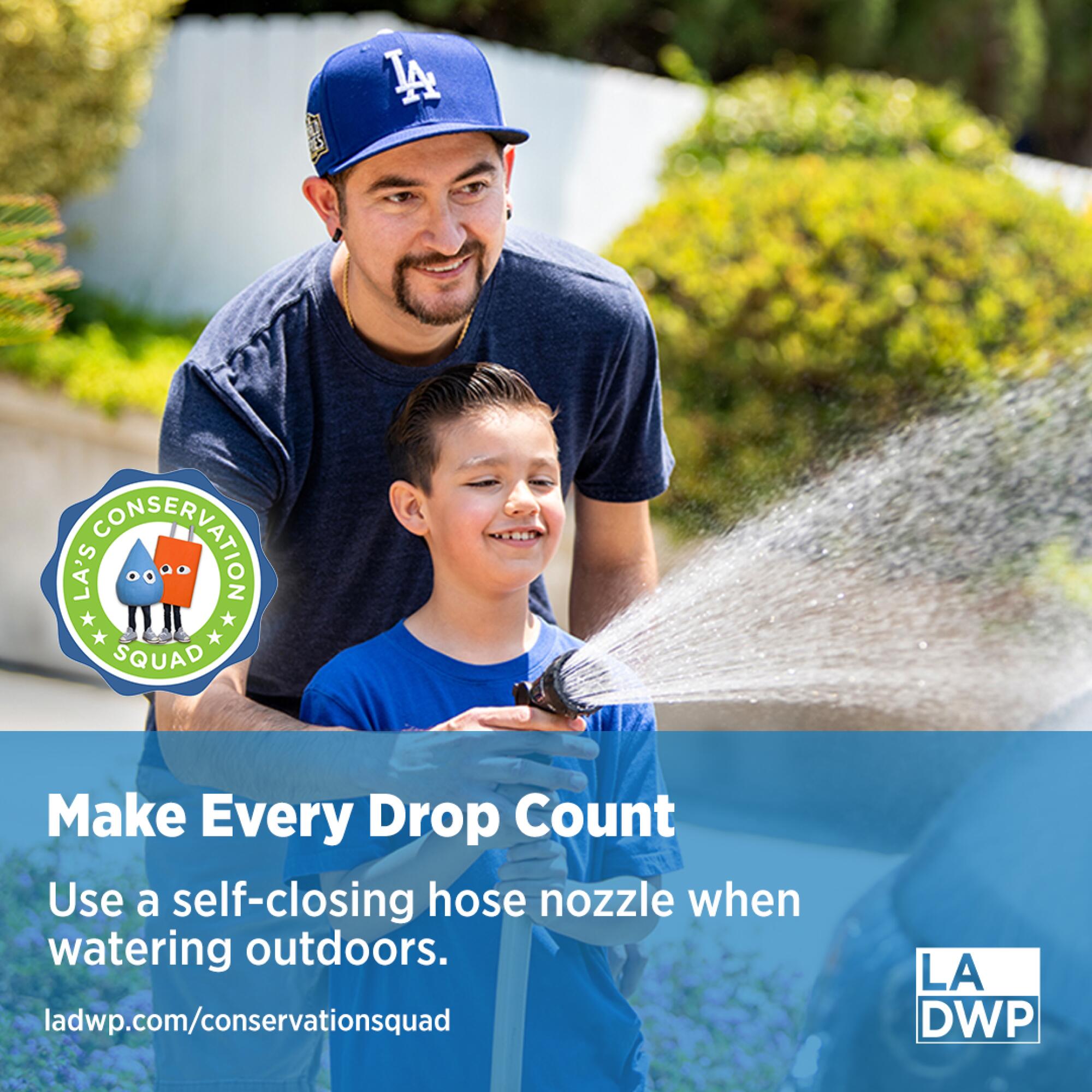
The agency will debut new graphics after the outdoor watering restrictions — two days a week with an eight- or 15-minute time limit — go into effect on June 1. The first to be made public, which shows who is allowed to water when and for how long, does a good job of conveying the nature of the restrictions.
But over the long haul, it’s important to show the cost — in water — behind the choices we make daily, especially since our megadrought does not appear to be going away any time soon.
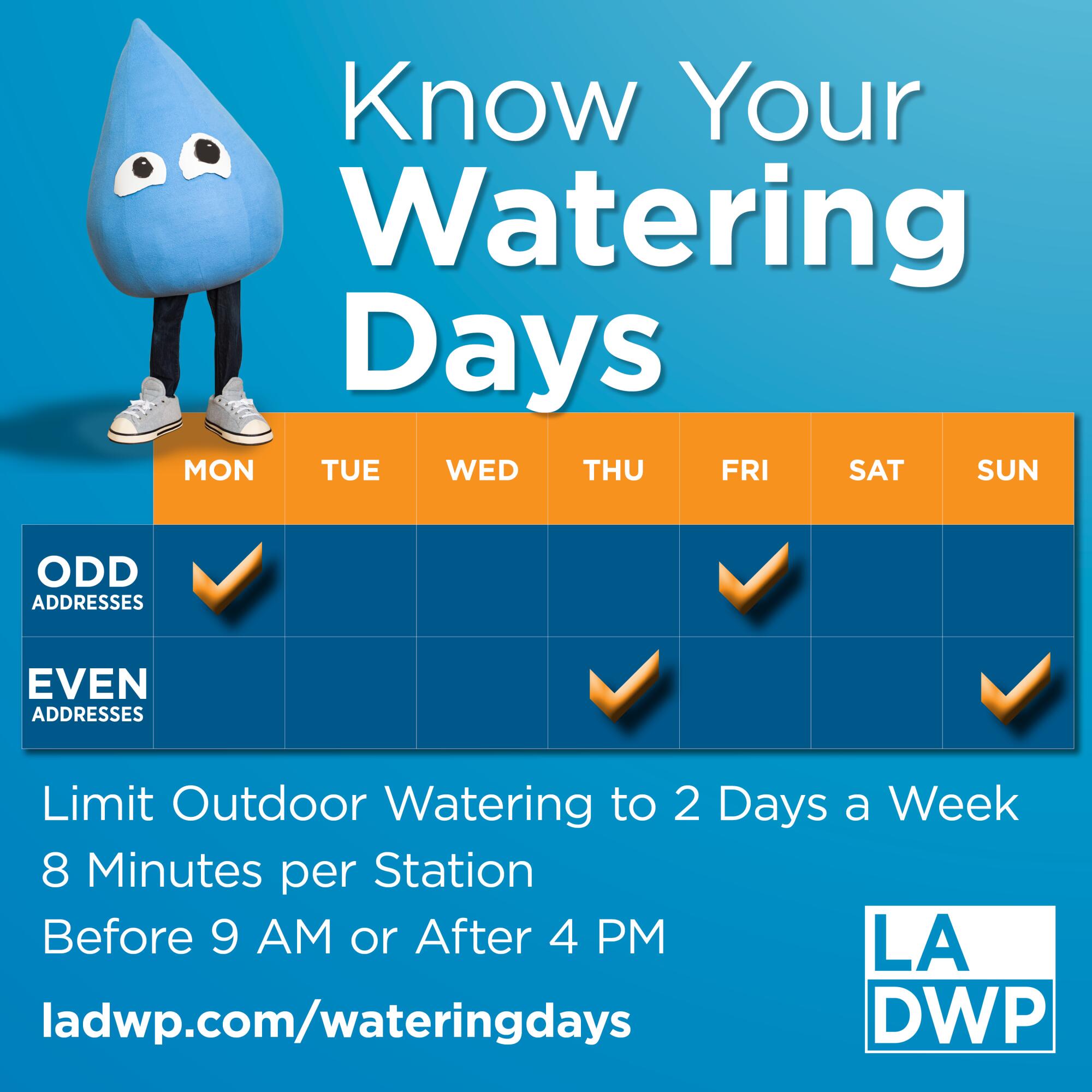
What’s the usage difference between a garden planted with water-thirsty grasses versus one featuring sturdier, warm-season varieties? What about a water-efficient washing machine versus a standard one? Or a five-minute shower as opposed to a luxurious soak? In the case of the baths, it could be a difference of about 60 gallons of water — 75% of a person’s daily average as calculated by the Metropolitan Water District.
It’d be helpful to have graphics that articulated that.
Gardening experts provide tips on lawn removal, drought-tolerant plants and how to keep turf semi-alive during the megadrought.
The Metropolitan Water District of Southern California, the larger regional water governance body of which LADWP is a part, also has a water conservation website, housed at a standalone URL, bewaterwise.com, that is clearly linked from the agency’s home page.
Its site is more user-friendly than the DWP’s and features an interactive graphic of a home that offers more concrete figures on water savings: Removing a turf lawn can save about 34 gallons of water per square foot per year, and installing a high-efficiency washer can save up to 11,000 gallons per year. And 11,000 gallons is a lot: about the amount of water that it takes to fill a 12- by 24-foot swimming pool with an average depth of 5 feet.
But to land at the Metropolitan Water District’s resourceful site, you have to spend some quality time digging around government water websites, which I imagine most people — other than a few deranged reporters — are unlikely to do.
The district also has social media and outdoor advertising campaigns, but like the DWP’s, the design suffers from insipidness. It features photos of smiling, accessible people of all ages, genders and races paired with eye-glazing text like: “I bought a flow monitoring device with a rebate to track any household leaks.”
Oh, I’m gonna conserve now!
Signifying nothing: The CIA’s logo looks like an album cover. Space Force seems to be jacking ‘Star Trek.’ For COVID-19, graphic design seems to be nonexistent.
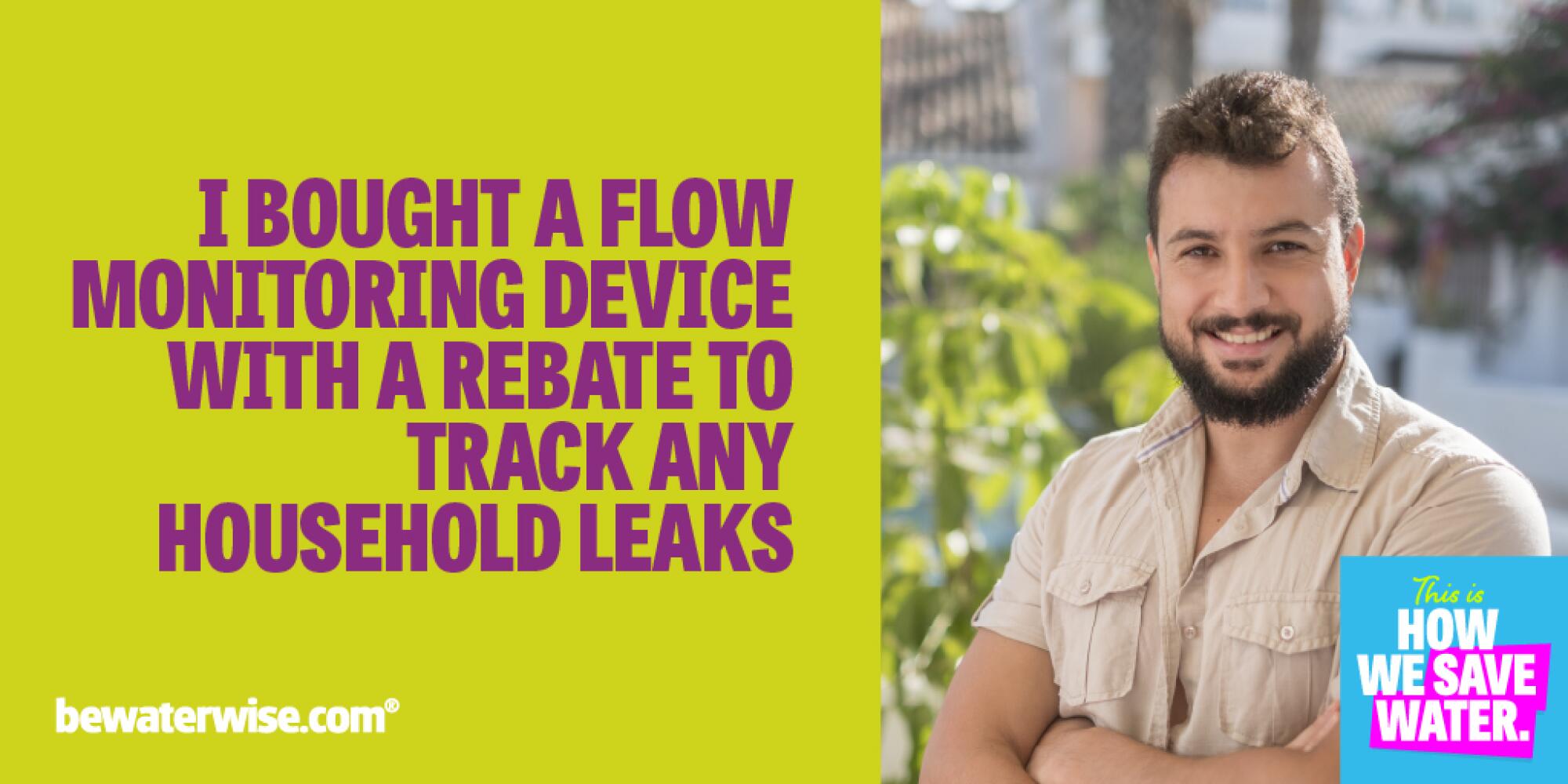
Another graphic features a kindly looking gent along with the declaration: “My high efficiency toilet saves water with every flush.”
Is that supposed to be motivating? It feels like a parody of a pharmaceutical ad: A lack of flow monitoring may lead to itchiness and extreme dryness, with a possibility of extended drought if left undiagnosed.
As news of this drought gets ever more dire, pumping up the emotion — and maybe even a little terror — would be a welcome thing.
A good example: In 2015, the Mayor’s Fund for Los Angeles produced “Save the Drop,” a conservation ad that struck a more emotive tone. Created by the Culver City-based ad agency Omelet, it asked us to regard water as a friend we should treat with greater respect.
Other international efforts have engaged worries about a waterless world, such as a 2009 campaign by Israel’s Water Authority that featured a television ad studded with celebrities who dried out and cracked as they spoke. That campaign is credited as a contributing factor in reducing home water usage by 18%. (That’s within Israeli-controlled territory, of course; water in Palestinian areas is a whole other story.)
In dealing with our water issues, perhaps a little whimsy wouldn’t hurt either.

“Save the Drop” helped promote water conservation in Los Angeles
Drop, the LADWP’s water mascot, is effective enough: a literal embodiment of water. But he’s not particularly memorable or the sort of character to get the kids all riled up. Given the state of our crisis, perhaps it’s time to up the ante. Last year, Japan’s Ministry of Land, Infrastructure, Transport and Tourism, named the water Pokemón Vaporeon as an official ambassador for “Water Day.”
Would it be too much to designate Palossand, a sand-castle Pokemón, as mascot of our lingering drought?
It may be. Though not if it finally gets us to turn off our taps.
More to Read
The biggest entertainment stories
Get our big stories about Hollywood, film, television, music, arts, culture and more right in your inbox as soon as they publish.
You may occasionally receive promotional content from the Los Angeles Times.
